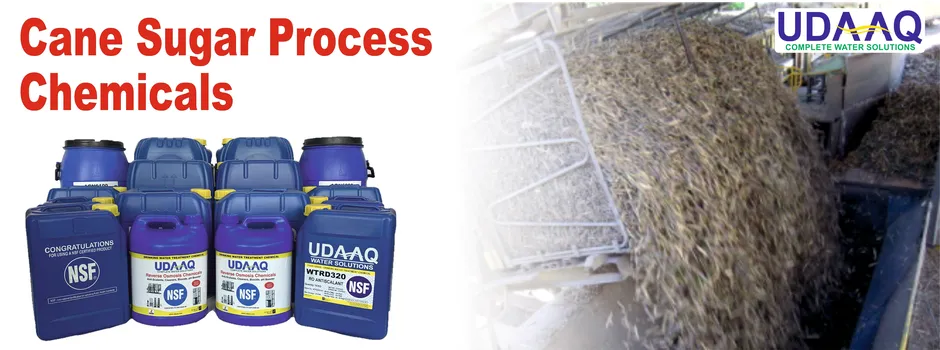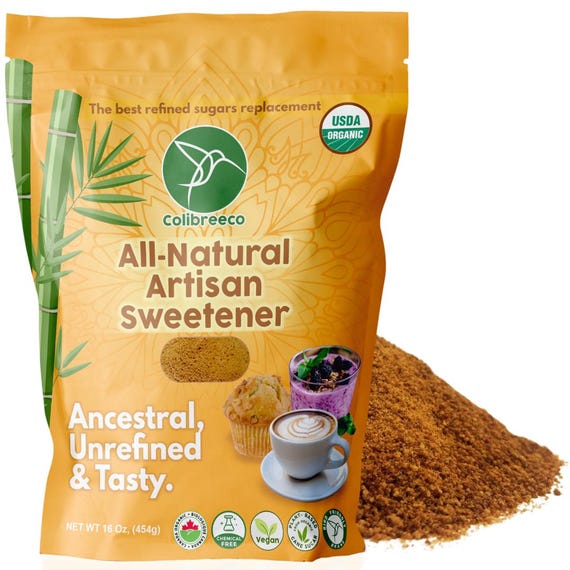The Diverse Usages of Sugar Walking Cane: From Food Products to Biofuels
Sugar Cane is a crop with varied applications that prolong far beyond basic sugar. Its products range from granulated sugar and molasses to fermented alcoholic beverages and sustainable packaging materials. Additionally, it contributes in the production of sustainable biofuels. Recognizing these diverse uses discloses the economic and ecological value of sugar Cane cultivation. The effects of its growing methods increase questions worth exploring further.
The Duty of Sugar Cane in Sugar Manufacturing
Although sugar Cane is commonly associated mainly with its sweet flavor, it plays a necessary duty in the production of various sweeteners worldwide. The process starts with removing juice from sugar walking cane, which is then made clear and evaporated to produce raw sugar. This raw sugar undergoes further refinement to develop granulated sugar, widely utilized in sectors and households. In enhancement to standard granulated sugar, sugar Cane is also the source of molasses, a thick syrup that maintains several nutrients and is utilized in baking and cooking.
In addition, sugar Cane serves as the foundation for creating different sugar like high-fructose corn syrup and particular fabricated sugar, which are progressively popular in food and drink manufacturing. The convenience of sugar Cane in sugar manufacturing not only pleases consumer need for sweet taste but likewise supports various food industries, highlighting its relevance beyond simple taste.
Sugar Cane in Food Products Beyond Sweeteners
Sugar Cane provides various nutritional advantages that expand past its function as a sweetener. Its versatility in cooking applications has led to ingenious usages in a series of food, boosting tastes and structures. This exploration highlights the broader payments of sugar Cane to the food market.
Nutritional Benefits of Sugar Walking Stick
The nutritional benefits of sugar Cane extend much past its well-known duty as a sweetener. This flexible plant is abundant in important vitamins and minerals, including calcium, iron, potassium, and magnesium. In addition, sugar Cane consists of anti-oxidants that aid combat oxidative stress in the body. Its high fiber content aids in digestion and promotes intestine health and wellness, making it a beneficial enhancement to the diet regimen. Sugar Cane juice is often consumed for its hydrating residential properties and all-natural power boost, giving a source of quick carbohydrates. The existence of phytonutrients contributes to its health advantages, potentially supporting immune function. Generally, sugar Cane uses an array of nutritional advantages, contributing to a balanced and health-conscious way of living.
Culinary Applications and Innovations
While frequently recognized mainly for its sweet taste, sugar Cane has become an innovative active ingredient in different culinary applications past standard sweeteners. Cooks and food producers are increasingly utilizing sugar Cane juice and syrup to improve taste profiles in tasty dishes, marinades, and sauces. Its all-natural sweetness equilibriums seasonings and acidity, making it a functional part in global cuisines. Additionally, sugar Cane fibers are locating their way into gluten-free flours, providing appearance and nutritional benefits. Innovative desserts, such as sugar Cane sorbets and sweets, showcase its one-of-a-kind flavor, while drinks like sugar Cane mixed drinks and teas highlight its invigorating qualities. These cooking improvements demonstrate sugar walking stick's potential to transform modern-day gastronomy.
The Manufacturing of Liquors From Sugar Cane
Transforming sugar Cane right into alcoholic drinks showcases the flexibility of this exotic plant. The fermentation of sugar Cane juice or molasses causes a range of popular drinks, consisting of rum, aguardiente, and cachaç. These drinks are deeply rooted in the societies of sugar-producing regions, specifically in the Caribbean and South America.
The production procedure begins with the removal of juice from fresh harvested sugar cane, which is then fermented utilizing yeast. This fermentation converts the sugars into alcohol, generating a base that can be distilled for higher alcohol content. Purification strategies differ, influencing the flavor profiles and qualities of the last product.
Furthermore, aging in barrels can boost the intricacy and depth of flavors in spirits like rum. On the whole, the change of sugar Cane into alcohols not just highlights its farming relevance but additionally adds considerably to the international drink sector, supplying varied and abundant experiences for customers.
Sugar Cane and Its Use in Biodegradable Product Packaging
Sugar walking stick's flexibility expands past drink production to ingenious applications in naturally degradable packaging. This eco-friendly source is significantly being used to develop environment-friendly packaging solutions that reduce dependence on petroleum-based plastics. Stemmed from the coarse residue of sugar walking stick, referred to as bagasse, makers can create biodegradable materials that decay faster than standard plastics.
These sugar cane-based packaging items use a sustainable choice for various sectors, consisting of Find Out More food and durable goods. They not only lessen ecological impact but likewise align with the growing customer demand for sustainable practices. Furthermore, sugar Cane product packaging can be engineered to preserve toughness while being light-weight, making sure that it meets the practical demands of services.
As ecological concerns intensify, the shift towards biodegradable materials, such as those stemmed from sugar walking stick, offers an appealing course towards sustainable product packaging options that add to a circular economic situation.
Checking Out Sugar Cane as a Lasting Biofuel
As the globe looks for renewable resource sources, sugar Cane arises as an encouraging candidate for lasting biofuel manufacturing. This flexible crop can be converted into ethanol, a cleaner-burning choice to nonrenewable fuel sources - What Is Sugar Cane Used For. The fermentation process utilizes the sugars drawn out from the walking cane, leading to a sustainable energy resource that substantially reduces greenhouse gas exhausts compared to standard gas
Sugar cane's high energy return per hectare further enhances its practicality as a biofuel. It can be cultivated in numerous environments, making it available for several regions, specifically in tropical and subtropical areas. Furthermore, the by-products of sugar Cane handling can be made use of in creating electrical energy, adding an additional layer of sustainability to its usage. The adoption of sugar cane-based biofuels not only promotes power self-reliance but also supports farming economic climates. As a result, sugar Cane sticks out as a sustainable option in the global change towards sustainable energy.
Nutritional Perks of Sugar Cane and Its Byproducts
The capacity of sugar Cane prolongs past its function in sustainable biofuel manufacturing; it likewise uses substantial nutritional advantages. Rich in crucial nutrients, sugar Cane provides essential minerals such as potassium, magnesium, and calcium, which add to general health and wellness. In addition, its juice is an all-natural resource of antioxidants, aiding to combat oxidative stress in the body.
Sugar Cane by-products, such as molasses, additionally enhance its nutritional profile. Molasses is high in iron, making it an important enhancement for those seeking to improve their iron intake. Both sugar Cane and its byproducts contain dietary fiber, which helps food digestion and promotes a healthy and balanced gut.

The Ecological Effect of Sugar Cane Growing

On the other hand, the growing procedure can lead to different ecological challenges. Logging often takes place to give way for sugar Cane fields, which interferes with communities and biodiversity. Furthermore, the heavy use of chemicals and plant foods can lead to soil destruction and water contamination, influencing regional wildlife and communities. The extensive watering needed in some regions can diminish water resources, leading to scarcity.

Frequently Asked Concerns
How Does Sugar Cane Affect Soil Health And Wellness Throughout Farming?
The growing of sugar Cane considerably impacts dirt health and wellness. It can improve soil structure and fertility via raw material enhancement, but extreme use of fertilizers might cause get more nutrition depletion and soil destruction with time.
What Are the Economic Advantages of Sugar Cane Farming?
The financial advantages of sugar Cane farming include job development, enhanced regional revenue, and contributions to national GDP. Additionally, sugar walking cane's convenience enables diverse market chances, boosting farmers' economic stability and advertising agricultural growth.
Can Sugar Cane Be Expanded in Non-Tropical Areas?
Sugar Cane can be grown in non-tropical regions, offered the climate is frost-free and appropriately warm. What Is Sugar Cane Used For. Adjustment methods, such as using and selecting appropriate ranges watering, can enhance its development potential in these locations
What Diseases and insects Impact Sugar Cane Crops?
Parasites such as sugarcane borers and aphids, along with diseases like red rot and rust, greatly influence sugar Cane plants. These threats can minimize yield and top quality, requiring effective monitoring methods for farmers.
Just How Is Sugar Cane Harvested and Processed?
Sugar Cane is commonly collected by reducing the stalks click to investigate close to the ground. After harvesting, the Cane is transported to refining facilities where it is squashed to remove juice, which is after that improved into different products.
Sugar Cane is a plant with varied applications that expand much past straightforward sweeteners. The process starts with drawing out juice from sugar walking cane, which is then made clear and vaporized to produce raw sugar. Innovative treats, such as sugar Cane sorbets and candies, display its one-of-a-kind taste, while beverages like sugar Cane cocktails and teas highlight its invigorating qualities. The existence of vitamins, specifically B vitamins, in sugar Cane sustains power metabolic rate and total health (What Is Sugar Cane Used For). On one hand, sugar Cane is a sustainable resource that can add to sustainable agriculture and provide biofuels, minimizing reliance on fossil fuels